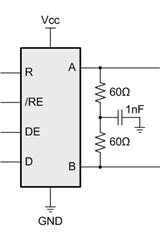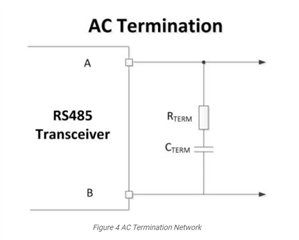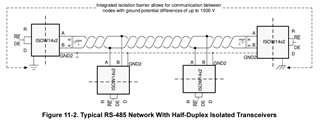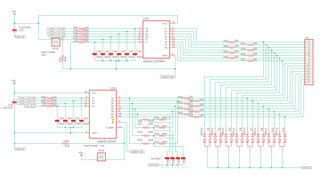Other Parts Discussed in Thread: AM26C31, TIDA-01401, TIDA-060027, TIDA-00731, , THVD1400
Hello Community,
We are designing an end-use case using an AM26C31x pair for our data transmission of upto 4Mhz maximum & 500kHz typical. I want to confirm the following:
- Having UTP CAT6 cable, do we benefit from Split Termination instead of single resistor termination?
- Using AC Termination - can we effectively limit the EMI by slowing the edges? Added advantage is lower power
- Do we need to add RC-based LP filters on the R/D side?
- We have selected SM712 for EDS, EFT & Surge protection on A/B side for both C31 & C32
- Any other robust EMC guideline that is available from TI for AM26C3x devices or RS422 in general, none is published on the product page
- Any suggestions on the use of Ferrite beads on the A/B side?

Split Termination is suitable/beneficial what frequency shall be selected for cut-off at/above/below the data rate? Does it matter?

Will AC Termination be a better choice if we can slow down the edges as our speed requirements are lower ~4Mhz at most.
Thanks & regards





